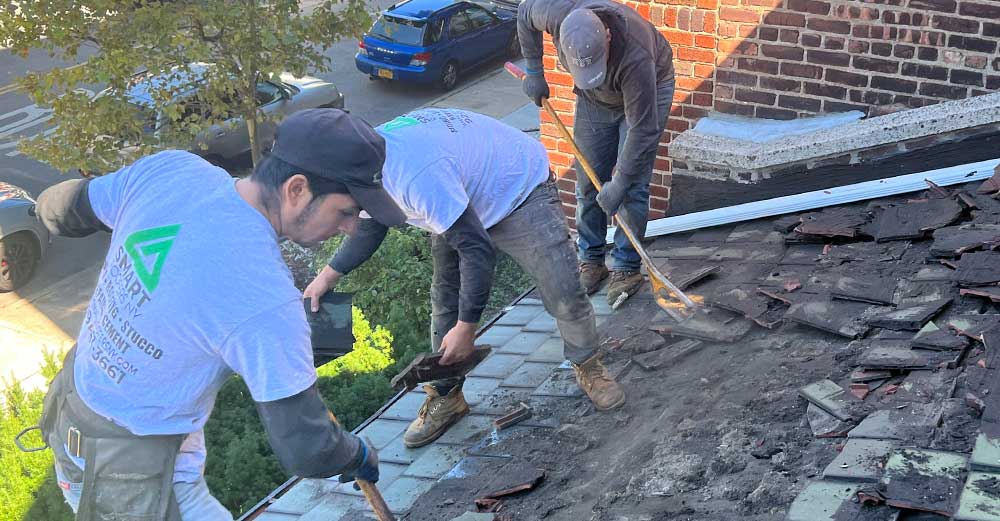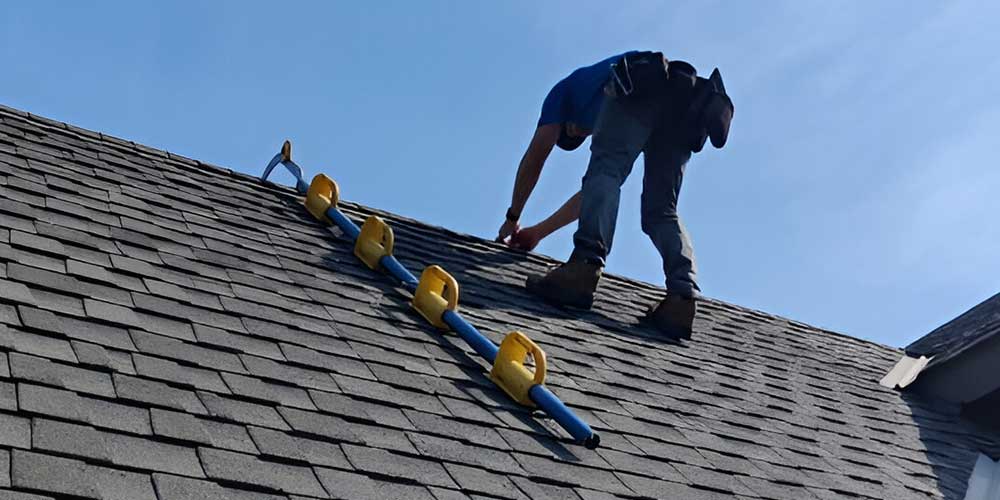Oahu Roofing: Reputable Roofing Solutions for Homes and Companies
Wiki Article
Understanding the Different Sorts Of Roof Coverings: A Comprehensive Overview for Homeowners
With a selection of options-- ranging from the standard gable to the modern flat-- each kind provides distinct advantages and obstacles that need to line up with the house owner's particular needs and ecological factors to consider. As we explore the intricacies of numerous roofing types, it ends up being apparent that one size does not fit all; the ideal choice might amaze you.Saddleback Roof
Saddleback roofs, defined by their triangular form, are among one of the most popular roofing designs due to their simpleness and effectiveness in dropping water and snow. This design includes two sloping sides that fulfill at a ridge, enabling reliable drainage and reducing the threat of water buildup. The steep pitch typically linked with saddleback roofs improves their capacity to deal with hefty precipitation, making them appropriate for numerous environments.In addition to their useful advantages, saddleback roofs provide visual adaptability. They can be adapted to different architectural designs, from standard to modern homes. The layout can likewise fit extra attributes such as dormer windows, which improve all-natural light and air flow in the attic space.
Additionally, gable roofings give ample area for insulation, adding to power efficiency. Home owners can pick from a variety of roofing materials, including asphalt tiles, metal, and tiles, even more improving personalization options.
In spite of their advantages, saddleback roofs might need additional support in areas vulnerable to high winds or hefty snowfall. On the whole, the gable roof covering stays a favored selection as a result of its blend of capability, resilience, and aesthetic allure.
Apartment Roofs
Level roofs are frequently acknowledged for their minimalist design and practical applications, especially in industrial and industrial settings (oahu roofing). These roofings include a horizontal or virtually straight surface area, which permits easy building and construction and flexible room utilization. While they may do not have the visual charm of angled roofs, flat roofing systems offer many benefits, particularly in metropolitan environments where making best use of area is essentialOne of the main benefits of flat roof coverings is their access. House owners can utilize the roofing room for various objectives, such as rooftop yards, terraces, or solar panel installments. Additionally, level roofing systems are typically extra cost-efficient to set up and keep contrasted to their sloped equivalents, as they need less materials and labor.
Usual products used for flat roofs include built-up roof (BUR), changed asphalt, and single-ply membrane layers, each offering distinctive advantages. In general, level roofings offer as a versatile and practical selection for several home owners and businesses alike.
Hip Roofs
Hip roofing systems are defined by their sloped sides that assemble at the top, developing a ridge. This style stands out from gable roof coverings, as all 4 sides of a hip roofing slope downwards toward the wall surfaces, providing an extra stable structure. The angle of the slopes can differ, enabling flexibility in building visual appeals and capability.One of the key benefits of hip roofing systems is their capability to endure heavy winds and damaging climate problems. The sloped surface areas enable better water drain, decreasing the threat of leaks and water damages. Additionally, hip roofs use increased attic room area, which can be utilized for storage space and even exchanged livable locations.
Nevertheless, constructing a hip roofing can be extra complicated and costly than easier roofing system types, such as gable roof coverings. The additional material and labor associated with developing the inclines and guaranteeing appropriate architectural integrity can result in higher costs. Despite these disadvantages, many property owners favor hip roofings for their sturdiness, visual appeal, and capacity for energy performance.
Mansard Roofings
Mansard roof coverings, typically identified by their one-of-a-kind four-sided style, attribute two slopes on each side, with the reduced incline being steeper than the top. This architectural style, stemming from France in the 17th century, is not just aesthetically appealing but practical, as it takes full advantage of the useful space in the upper floorings of a building. The high reduced slope permits even more clearance, making it an optimal option for lofts or attic rooms, which can be converted right into living spaces.Mansard roof coverings are characterized by their versatility, fitting different architectural styles, from conventional to contemporary. They can be created with different products, consisting of asphalt shingles, slate, or metal, offering home owners with a series of options to suit their preferences and budget plans. Furthermore, the design allows for the assimilation of dormer windows, enhancing all-natural light and air flow in the top degrees.
Nonetheless, it is important to consider the potential drawbacks. Mansard roofings may require more upkeep as a result of the intricacy of their layout, and their high slopes can be challenging for snow and rainfall drainage. On the whole, mansard roof coverings integrate sophistication with functionality, making them a popular selection among home owners seeking unique building functions.
Dropped Roofing Systems
As website link home owners significantly look for simpleness and performance in their architectural layouts, dropped roof coverings have become pop over to this web-site a prominent choice. Characterized by a solitary sloping airplane, a shed roof offers a minimalist visual that matches various home designs, from modern to rustic.Among the primary benefits of a shed roof is its simple construction, which usually equates to decrease labor and material expenses. This layout permits for effective water drain, reducing the danger of leakages and water damages. Furthermore, the vertical slope supplies enough space for skylights, improving natural light within the interior.
Lost roofs likewise use versatility in terms of usage. They can be properly integrated into additions, garages, or outside frameworks like sheds and pavilions. Additionally, this roof covering design can accommodate different roof products, consisting of steel, asphalt tiles, or also environment-friendly roofs, aligning with green campaigns.
However, it is necessary to take into consideration local environment problems, as hefty snow tons may necessitate adjustments to the roof's angle or structure. Overall, shed roofings offer a functional and visually pleasing choice for property owners looking to optimize performance without jeopardizing style.
Conclusion


Gable roof coverings, characterized by their triangular form, are amongst the most popular roof designs due to their simplicity and efficiency in losing water and snow. oahu roofing. The steep pitch frequently linked with gable roofing systems boosts their ability to deal with hefty rainfall, making them ideal for various climates
While they might lack the visual charm of pitched roofing systems, level roofings provide countless advantages, specifically in urban atmospheres where maximizing space is essential.

Report this wiki page